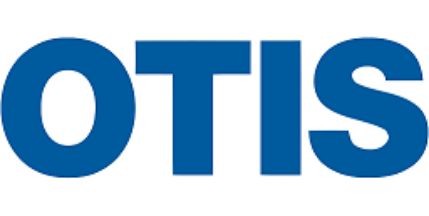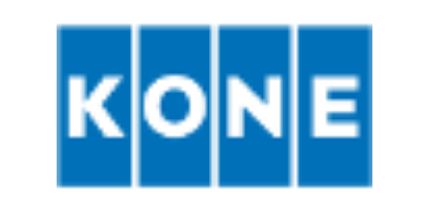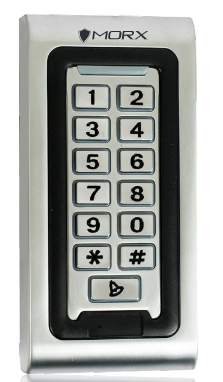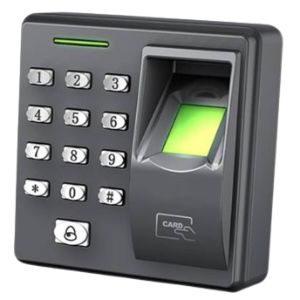Lift Access Control System- Ahmedabad, Gujarat
We are an extensively trained and experienced staff with multifold-broad information on lift / elevator access control systems. Our team has a strong specialized starting point for Lift / elevator Access Controls and all their variations. We have effectively executed many access control installations in lifts / elevators PAN-India and a couple of different nations, for over 7 years. We are committed to our clients to fulfill their requirements. We will make every effort to address their issues. We offer varied types of lift / elevator access controls and excel in their installation. In light of client necessities. Our access control solutions save electricity and limit unauthorized access to the floors. We provide access control solutions to lifts / elevators from all top-notch manufacturers like Johnson, OTIS, Kone, Schindler, ThyssenKrupp, ECE, and Shubham lifts, as well as nearby lifts.
Enquire now
Fill the form below to get call back
Benefits / Advantages / Uses / Importance of using Lift / Elevator Access Control Solutions / Systems
- Lift access control systems provide specific individuals access to specific floors in a building at predetermined times. Systems have some control over different numbers of lifts, contingent upon the control panel that is chosen. This can work on a business’ security and reduce costs.
- An ID device can be given to every individual who works in the office to grant access to specific floors inside the building. Lift access can be coordinated with CCTV cameras to see who is attempting to utilize lifts to get to different floors.
- Lift access can be conceded or denied in light of the client’s classification, the time of the day, the lift the individual is endeavoring to utilize, and the furnished condition of a division. The situation with a zone can be changed to give or deny access. Lift access control systems can be made that are both adaptable and secure.
- An organization’s staff can change frequently. Representatives can lose keys or not turn them in when their employment ends. By relegating every individual to a proximity card or key fob, an individual device can be taken out from the system, which disposes of the need to change the locks in every lift.
- Numerous organizations require a manager to be available before different employees are permitted into the building. A lift access control system can be set up with the goal that no one but bosses can disarm lifts and permit other staff access.
- Various offices can work on various timetables. An entrance control system can permit access to individual lifts just at specific times.
- The overall population should be kept out of limited regions. This can be achieved via naturally locking and opening lobby lifts at specific times.
- Utilizing gatekeepers to safeguard a business can be costly. Utilizing a lift access control system, radios, and cameras can reduce the requirement for guards and lower costs.
Stand Alone Access Control Terminal
SEM01-SMF01
The unit is single entry way multi-capabilities and alone access regulator or a Wiegand yield keypad or a card peruser. It is appropriate structure ounting either indoor or outdoor,in unforgiving conditions. It is housed in serious areas of strength for a, and miscreant verification Zinc Combination electroplated case which is accessible in either a dazzling silver or matt silver completion. The hardware are completely pruned so the unit is waterproof and adjusts to IP65. The inbuilt card peruser upholds 125KHZ EM cards,13.56MHz Mifare cards. The unit has many additional elements including lock yield current short out protection,Wiegand output,and an illuminated keypad.These highlights pursues the unit an ideal decision for entryway access not just for little shops and homegrown house holds butals of or business and modern applications like production lines, stockrooms, research centers, banks and detainment facilities.
Specifications
- User Capacity – 2000 card
- Authentication methods – Card, PIN, Card + PIN
- Card Type – proximity/mifare
- verification mode – 1:N, 1:1
- Card Reading Distance – 3-6 cm
- Fast operating speed – <20ms with 2000 users
- Waterproof – Conforms to Ip68
- Wiegand Interface – Wiegand 26 bit
- Adjustable Door Relay time – 0 -99 seconds
- Operating Temperature – -45°C~60°C
- Operating Humidity – 10%- 90% RH
- Idle Current – 25±5 mA
- Operating Voltage – DC 12V±10%
- Zinc alloy case – Yes
- Backlight keys – Yes
- Wiring Connections – Electric Lock, Exit Button, External reader
Standalone Keypad Access Control
SEM01-SMF01
Features
- Indoor use
- Backlight keys
- Built in buzzer
- Can connect external reader
- Easy to install and program
- Full programming from the keypad
- Very low power consumption (30mA)
- Can be used as a standalone keypad
- Lock output current short circuit protection
- Wiegand 26 output for connecting to a controller
- 2000 uses, supports Card, PIN, Card + PIN· Fast operating speed, <20ms with 2000 users
- Wiegand 26 input for connecting with a reader
- Adjustable Door Output time, Alarm time, Door Open time
- Built in light dependent resistor (LDR) for anti tamper
Specifications
- Operating Voltage – DC 12V±10%
- User Capacity – 2000
- Card Type – EM
- Card Reading Distance – 5-8 cm
- Active Current – <60mA
- Idle Current – 25±5mA
- Lock Output Load – Max 3A
- Alarm Output Load – Max 20A
- Operating Temperature – -4 6
- Operating Humidity – 10%- 90% RH
- Adjustable Door Relay time – 0 -99 seconds
- Adjustable Alarm Time – 0- 3 minutes
- WG Interface – WG26 bits
- Wiring Connections – Electric Lock, Exit Button, External Alarm & Reader
- Dimensions – L92 x W81x H20 mm
Fingerprint Access Control System
X7
Specifications
- Card Capacity : 500
- Fingerprint Capacity : 500
- Password Capacity : 8 groups
- Sensor : Optical Sensor
- Algorithm Version : Finger V10.0
- Interfaces for : 3rd party electric lock, exit button, door sensor,alarm and bell exit button,door sensor,alarm and bell
- Verification method : password, fingerprint, card, password+fingerprint, password+card
- FAR : <=0.0001%
- FRR : <=1%
- Operating Temperature : 0°C-40°C
- Operating Humidity : 20%-80%
- Power Supply:12 Power Supply : 12VDC,3A
- Dimension(LxWxH) : 88x88x35mm
Ahmedabad is the most crowded city in the Indian territory of Gujarat. It is the regulatory base camp of the Ahmedabad area and the seat of the Gujarat High Court. Ahmedabad’s populace of 5,570,585 (per the 2011 populace registration) makes it the fifth-most crowded city in India, and the enveloping metropolitan agglomeration populace assessed at 6,357,693 is the seventh-most crowded in India. Ahmedabad is situated close to the banks of the Sabarmati Stream, 25 km from the capital of Gujarat, Gandhinagar, otherwise called its twin city.
Ahmedabad has arisen as a significant financial and modern center in India. It is the second-biggest maker of cotton in India, because of which it was known as the ‘Manchester of India’ alongside Kanpur. Ahmedabad’s stock trade (before it was closed down in 2018) was the nation’s second most seasoned. Cricket is a famous game in Ahmedabad; a recently constructed arena, called Narendra Modi Arena, at Motera can oblige 132,000 onlookers, making it the biggest arena on the planet. The a-list Sardar Vallabhbhai Patel Sports Territory is presently under development and once complete, it will be perhaps of the greatest game habitats (Sports City) in India. The impacts of the advancement of the Indian economy have stimulated the city’s economy towards tertiary area exercises like trade, correspondence and development. Ahmedabad’s rising populace has brought about an expansion in the development and lodging businesses, bringing about the advancement of high rises.
The region around Ahmedabad has been possessed since the eleventh 100 years, when it was known as Ashaval. Around then, Karna, the Chaulukya (Solanki) leader of Anhilwara (present day Patan), pursued a fruitful conflict against the Bhil ruler of Ashaval, and laid out a city called Karnavati on the banks of the Sabarmati. Solanki rule went on until the thirteenth 100 years, when Gujarat went under the control of the Vaghela tradition of Dholka. Gujarat in this manner went under the control of the Delhi Sultanate in the fourteenth hundred years. Nonetheless, by the previous fifteenth 100 years, the neighborhood Muslim lead representative Zafar Khan Muzaffar laid out his freedom from the Delhi Sultanate and delegated himself Ruler of Gujarat as Muzaffar Shah I, in this way establishing the Muzaffarid tradition. In 1411, this region went under the control of his grandson, Ruler Ahmed Shah, who chose the forested region along the banks of the Sabarmati stream for another capital city. He established the underpinning of another walled city close to Karnavati and named it Ahmedabad after himself. As per different variants, he named the city after four Muslim holy people in the space who all had the name Ahmed. Ahmed Shah I established the underpinning of the city on 26 February 1411 (at 1.20 pm, Thursday, the second day of Dhu al-Qi’dah, Hijri year 813 at Manek Burj. Manek Burj is named after the unbelievable fifteenth century Hindu holy person, Maneknath, who mediated to assist Ahmed Shah I with building Bhadra Post in 1411. He picked it as the new capital on 4 Walk 1411. Chandan and Rajesh Nath, thirteenth era relatives of Holy person Maneknath, perform puja and lift the banner on Manek Burj on Ahmedabad’s establishment day and for the Vijayadashami celebration consistently.
Installation Expertise in:































